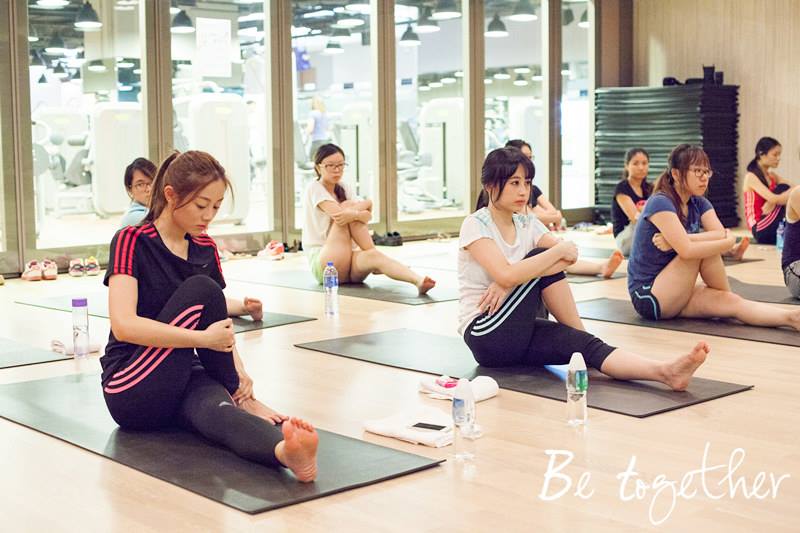Namaste!
Yoga is a fantastic way to make your body as happy and healthy as it could be. It’s great for fitness as well as for spirituality.
Let me start by giving you some “definitions” to yoga. Yoga, the word, is from the word “yuj” in Sanskrit. It means “a method of discipline” or interpreted as “union.”
Namaste basically means “I bow to you.” Nama means “bow,” as means “I,” and te means “you.” It’s the acknowledgment of the soul in one by the soul in another. You’re supposed to bring your hands together when saying the word in a prayer pose, although people in India just do the hand gesture. It’s usually done when a yoga class, or lesson, is done.
A female who practices yoga is called a yogini and a male who practices yoga is called a yogi.
There are 8 limbs of yoga:
Yamas (Restraints)
Niyamas (Observances)
Asana (Postures)
Pranayama (Breathing)
Pratyahara (Withdrawl of Senses)
Dharana (Concentration)
Dhyani (Meditation)
Samadhi (Absorption)
Most yogis and yoginis today practice the 3rd and 4th limbs, sometimes the 7th limb.
Asana is a program of a sequence of physical postures designed to provide the physical strength and stamina for long periods of meditation and to purify the body.
Om is a mantra or vibration, that is traditionally spoken at the beginning and end of yoga sessions to symbolize the movement of everything around us, the universe. Everything moving at its own pace to sustain life and keep the universe alive.
Anyone could do yoga, you just need to find the right type of yoga for you to practice based on your physical athleticism and your own personal preferences. Yoga should be practiced from 5 to 7 days a week to get the full advantages.
There are different types of yoga to choose from:
Hatha Yoga — This is the main type of yoga practiced in the US. It focuses mostly on the 3rd limb of yoga, which is postures that you do in a sequence of movements.
Anyone could do this yoga, just do the poses as best as you can and at your own pace. Has great physical benefits, great for destressing and calming down.
Ashtanga — This is a rapidly moving yoga that “flows” from one pose to the next focusing on breathing at the same time. This is great for weight loss, gaining strength, and flexibility.
Not everyone could do this because of its strenuous poses.
Bikram Yoga (Hot Yoga) — This is yoga where the room is heated to about 100° or more. You’re less likely to get injured with this yoga because the heat heats the muscles. which makes them move more freely.
There are continuous, flow-style poses in this. Could be hard on the body, get a doctor’s permission beforehand. The heat gives both mind and body benefits.
Iyengar — This yoga uses props to assist in you getting the poses right like straps, blocks, harnesses, etc. Also known as “furniture yoga.” This is great for all ages and abilities.
Works every part of the body for great muscle definition. Jivamukti — This yoga goes back to traditional yogic scripture. It focuses on 5 tenets: scripture, meditation, ahimsa (nonviolence), bhakti (devotion to God), and nada yoga (yoga of sound).Kundalini — This is a yoga that has invigorating, constantly moving poses. Kundalini means “serpent” and its fluidity is intended to release the serpent energy in your body.
This yoga is more than a workout, you also get mind/body awareness and a greater spirituality awareness.
Power Yoga – This is an “aerobic” type of yoga, it’s active and athletic. High calorie burns and it sparks metabolism.
Prenatal Yoga — This is obviously for expectant mothers. It helps women in all stages of pregnancy and helps for after you have the baby by helping get the strength and energy for your body to return to normal afterward. It speeds up labor, wards off aches, swelling, and pain during pregnancy. It’s a safe yogic exercise. Restorative — This is a yoga that focuses more on relaxation than other yogas. Usually, only a couple of poses, spending about 20 minutes per pose. This is great for injury rehab and stress.
Tantric Yoga — Tantra combines the words “tattva” and “mantra.” “Tattva” is the science of cosmic principles and “mantra” is the science of mystic sounds and vibrations.
Tantric yoga is mistakenly associated with black magic and sex, and is thought of as obscene to some people, but this is all wrong. Because it is hard to describe, its basic idea is to use all energy flowing in the universe, good or bad, and use that in their daily life, material, spiritual, or both, to create the best life possible.
Vinyasa — This yoga combines movement and breathing, it’s a “flow” type of yoga. Could be done slow or fast.
When done fast, it could be associated with Ashtanga yoga.
Yin Yoga — This helps regulate the flow of energy in the body. Most of the poses are done on the floor and is somewhat slow yoga. Passive maintains or improves flexibility, healing, and meditative.
Yoga Therapy — This is a yoga that is a lot like restorative yoga, except it also contains mental, physiological, and spiritual pain and suffering therapy. This is usually done one-on-one with a practitioner. This practice also encourages a healthy diet and lifestyle changes that may need to be perfected.
Some yoga classes mix some of these kinds of yogas together, some are specific to one kind. DVDs, training programs, etc. could be similar, either specific or a mixture of different kinds.
No products found.

